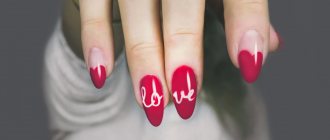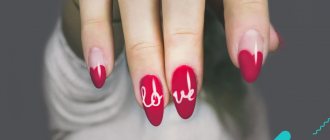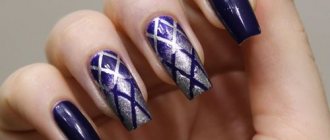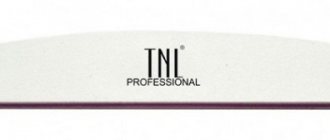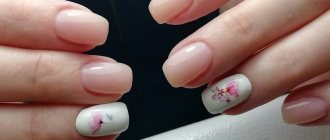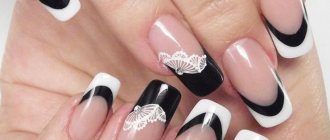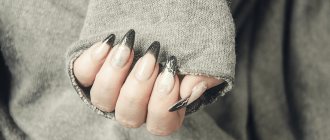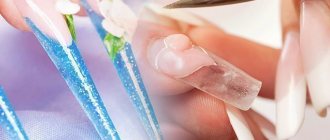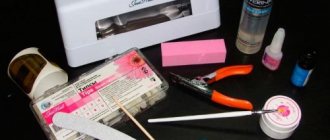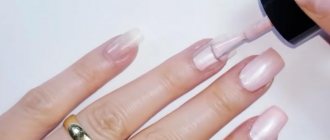Every girl wants to be irresistible. To make your look complete and stylish, even little things like nails can play an important role. Beautiful and well-groomed nails make a woman sexy and attractive. But, unfortunately, not everyone has been blessed with such beauty by nature.
How nail extensions are done - practicing nail artists, on the instructions of the COLADY editors, tell us step-by-step extension technology.
Pexels Photos
Nail extension is a simple procedure that will help make your hands neater and your image complete. Before deciding on the procedure, read interesting reviews and watch useful video tutorials about nail extensions.
Cons of nail extensions
- Quite a high cost of the nail extension procedure;
- When preparing the nail, it will be exposed to mechanical devices, damaging it;
- If you come across an unscrupulous master, deformation of the nail may occur;
- You may develop an allergy to the components that make up the extension materials;
- If the extended nail breaks, it breaks in the middle of the nail plate, which is very painful and does not lead to anything good.
- Extended nails require correction, so you will have to find time and money to visit the salon;
- Natural nails become thinner after removing extensions. You will have to spend a lot of effort to get your natural nails in order.
- Gel nails cannot be removed, they will have to be filed off. Only a master can perform such a procedure.
Apex
All types of forms of extended nails are united by the rule of constructing the apex - the highest point of the modeled nail, at which the longitudinal and transverse arches intersect. For an artificial material to adhere well to a natural nail, good adhesion (adhesion to the keratin of the nail) is not enough. A properly formed nail has a curved shape in a cross section called the C-curve. The volume of the layout along the entire length of the nail also forms a bend - longitudinal.
If the C-bend in modern modeling is symmetrical and makes up about 50% of the circle, then the longitudinal bend does not have its highest point at the middle of the length, otherwise the structure would be too heavy and prone to breakage. Depending on the length of the natural nail plate, this point is located either above the middle of the natural nail, or slightly closer to the cuticle. It's called balance.
If you look at artificial nails from the side, you can see how the line, rising from the cuticle, then goes parallel to the axis of the nail or smoothly descends to the free edge.
Gel and acrylic nail extensions - comparison
At the moment, there are 2 main materials for nail extensions - acrylic and gel.
- Acrylic is a special powder that is mixed with a special liquid. The result is a thick and sticky substance that is applied to the nail. A professional can properly extend acrylic nails, since the acrylic mixture quickly hardens in air. But, with certain skills, acrylic nail extensions can be done at home. After applying the mixture to the nail, it is trimmed, polished and coated. Acrylic nails are very durable, but if you still manage to break them, a specialist in the salon can easily repair the damage. Acrylic nails are easy to remove : using a special product, acrylic is dissolved and removed. The only drawback of acrylic nails is the specific smell of the material, which will accompany you for some time. But then the smell will disappear.
- Gel is also a good material for nail extensions. Thanks to the gel, nails are not only strong, but also elastic. The gel allows the nails to breathe and allows moisture to pass through, which is good for the nails. Gel nails harden under the influence of ultraviolet rays, which will not allow fungus to develop on the nail plate in the future. To make the nail stronger, the procedure is repeated several times. When the last layer of gel has hardened, the nail can be given the desired shape and coated with varnish. Gel nails can be done in a salon by an experienced nail technician, but gel nail extensions can be easily done at home if you purchase everything you need for the procedure and study the instructions. The advantages of gel nails include durability (service life can reach up to 5 months). Among the disadvantages are the following: if a nail breaks, it cannot be restored ; you will have to make a new one. Getting rid of gel nails is also difficult. Frozen gel can only be removed by a master by filing .
To be honest, gel and acrylic belong to the same group of “acrylates”, so it’s impossible to say for sure which is better. Each person chooses the most optimal extension option and follows it. At the moment, there is a special technology that allows you to combine acrylic and gel: first acrylic is applied to the nail, which makes the nail stronger, then gel is applied to add shine.
Materials and technologies
All of the above types of gel nails are created using templates. When choosing a material, some craftsmen combine acrylic and gel technologies. But the vast majority still work with gel. Now there are gels of different characteristics: for laying out the free edge, for imparting rigidity to the structure, colored soft gels and building strong structures.
When filling out a template, gel properties such as shape retention are important. If it is too liquid, it will be impossible for them to work on large surfaces - it will flow onto the cuticle and lie unevenly on the side edges. Therefore, to build complex structures, high-quality gels are needed, and this is not cheap.
To give additional strength, fill the end of the stiletto with a small ball of acrylic. The gel in such a place may not dry completely, but acrylic will not let you down.
All methods of nail extension - with tips, with paper forms, with top forms, with liquid tips
There are several types of nail extensions. Each type is different from each other and has its own advantages and disadvantages.
Nail extension with tips
Illustration by Colady
Tips are plastic plates that are attached at one end to the nail before applying gel or acrylic. After applying the material, the extended nails are covered with varnish and a design is applied. The color and size of tips can be very diverse.
There are liquid tips (reusable forms with which an artificial nail is made. This method does not use disposable forms or tips).
An important advantage of liquid tips is the non-use of glue. Glue is the most toxic substance used for any nail extension. Using liquid tips you can:
- Create reusable forms, which significantly saves the budget;
- Create the perfect arched jacket;
- Create unique and complex designs;
- Possibility of creating a pedicure.
Properly selected tips can only use a small part of the nail, which protects your nails. After fixing the tips, the nails can be given any shape or length. Here everything depends only on the imagination and skill of the master.
Form nail extensions
Forms are disposable paper bases, the outer side of which is coated with a special compound, and the inner side is coated with an adhesive component. Paper forms are thrown away after use. There are reusable forms made of metal. These forms are attached to the nail using a metal clip. For subsequent use, the metal mold must be disinfected.
Plate irregularities
After nail extensions, the native plates may become uneven and wavy. The solution to this problem is to apply special leveling agents, for example, Nail Wraps System.
types of nail extensions photos
In addition to all this, nails should rest for some time after extensions. Recovery does not happen in a couple of days. At least this is a month.
For high-quality nail restoration, you need:
- Trim your nails and do not grow them for a while;
- Apply nourishing, moisturizing and vitamin-mineral products to the plates daily;
- Take vitamins internally;
- Cover your nails only with medicated varnishes, remove them every evening and reapply in the morning;
- Avoid colored varnishes;
- Avoid products that soften the cuticle (together with the cuticle, they soften the nail itself, which is completely unacceptable during the recovery period);
- Maintain hand hygiene.
Top
How to care for extended nails
Many people believe that it is not necessary to take care of your nails after extensions. But that's not true! Any material does not last forever and requires special care, especially since natural nails tend to grow. There is no way to do this without correction of extended nails.
To make your nails look beautiful and not break, it is important to follow some rules:
- Neither gel nor acrylic nails tolerate acetone. Therefore, choose nail polish remover without acetone, use non-aggressive household chemicals;
- Do not use wire cutters or scissors. A polisher and file for extended nails will help you adjust the length of your nails;
- Do not hit your nails on a hard surface, do not drop heavy objects on them and be careful;
- Take care of your cuticles. To prevent hangnails from forming and to keep the cuticle moisturized, moisturize it with vegetable oils. If your cuticle grows too quickly, use a special product to slow down its growth;
- Before a manicure, do not take baths, use only softening oils. This will help prevent damage to your nails;
- If you dive into a cold pool after a hot bath, you can damage your nails;
- When painting your nail extensions with varnish, use only high-quality varnishes. Pay attention to the consistency and shelf life of the varnish;
- It is recommended to go for correction at least once every 3 weeks;
- Do not resort to hardware manicure services. It contributes to weakening and brittleness of nails;
- Don't try to fix a broken nail yourself;
- It is recommended to remove extended nails only in salons;
- Do not cover your extended nails with a thick layer of varnish.
These are the basic rules for caring for extended nails, following which you will preserve their beauty and durability.
Design
Every year there are interesting new products in the field of nail design. Masters come up with real masterpieces, some of which occupy strong positions in the nail industry for a long time.
cat's eye
The main feature of this manicure is the presence of graceful and shimmering tints passing through the entire area of the nail plate. This effect is achieved by microscopic metal particles and special magnets.
The technique is very simple, you just need to hold a magnet so that a beautiful shining strip appears. This option looks stylish and voluminous, suitable for special occasions.
Matte design
Matte coating appeared quite recently, but has already become a popular fashion trend. Applying it requires patience, time and accuracy. If you make even one inaccurate movement, then everything will have to be redone. Velvet manicure is a good alternative to boring glossy varnish. It looks elegant and attracts the attention of others. If desired, it can be additionally decorated with decorative elements.
Matte manicure is a practical and versatile option. It is suitable for both parties and workdays.
Ombre
This technique was borrowed from the field of hairdressing. It involves a smooth transition from one color to another. Some masters use not two, but even three or more shades. This is more painstaking work that requires professionalism, but the result will exceed all expectations.
Execution algorithm:
- applying varnish to a damp sponge;
- using a base coat to smooth the nail surface;
- applying colorless varnish to a gradient that has not yet dried;
- updating the palette of varnishes on a sponge for each nail.
With an image
New technologies in nail service are not limited by anything. You can apply any designs and prints to the nail surface: hieroglyphs, letters, flowers, images of animals, geometric motifs, intricate lines.
A design made on one nail, for example, perfectly diversifies the classic French manicure.
Liquid stones
Russian nail art technologist Ekaterina Miroshnichenko has developed a technique for embodying precious stones on nails using colored gels. These can be rubies, emeralds, sapphires and other minerals. A prerequisite for such a manicure is the presence of long and artificial nails.
Technique:
- Giving the nail plates the desired shape.
- Degreasing.
- Creating a contour with art gel.
- Forming a mineral support using colored polymer. It fixes the stone and makes it more iridescent.
- Drying the substrate under a UV lamp.
- Application of a polymer made from stained glass gel into the core. Polymerize it under a lamp for three minutes.
- Applying a clear sculpting gel to add volume to the entire design.
- Applying top coat.
A large number of innovations in the nail industry allows artists to find an approach to any client. Everyone will be able to choose the best coating option for themselves and choose a design to their taste.
Ecology
Gel polishes are another drop in the ocean of plastic that has filled our planet. In addition, no one controls their production and disposal. Therefore, many eco-activists refuse artificial nails.
Read also: 4 ways to wear knitwear with lace and be damn feminine
@itsagcreation
